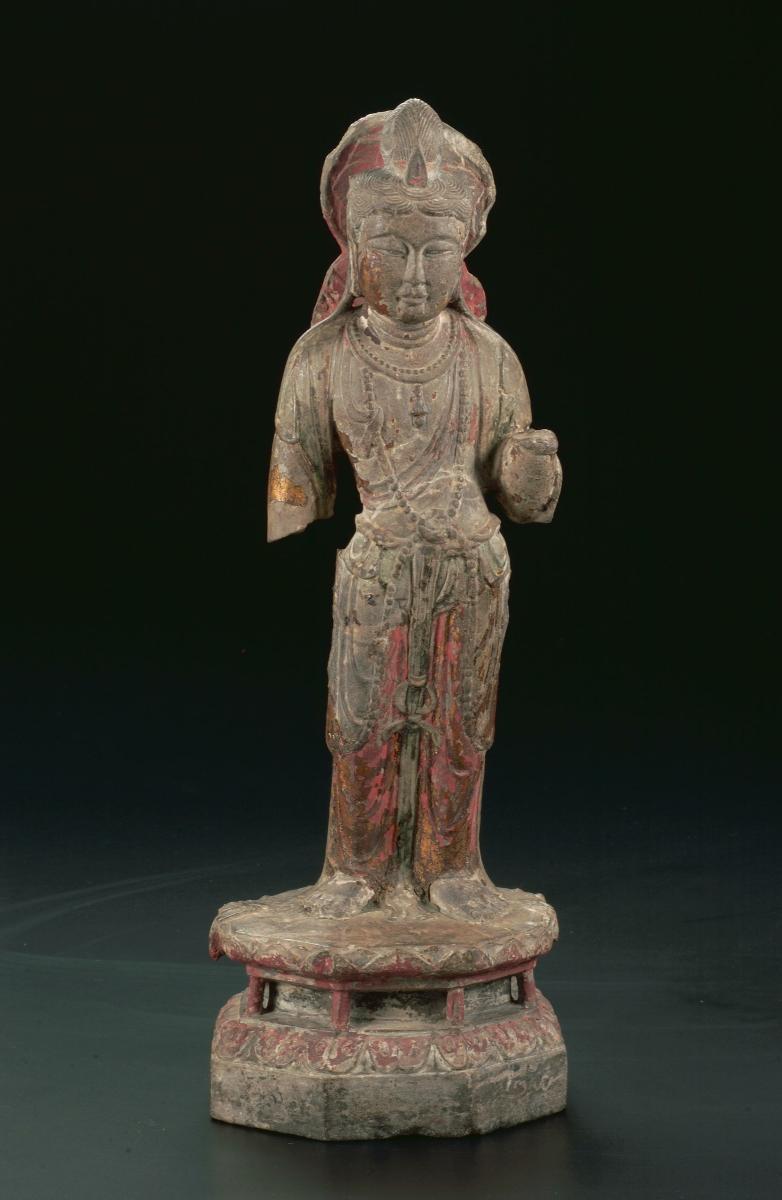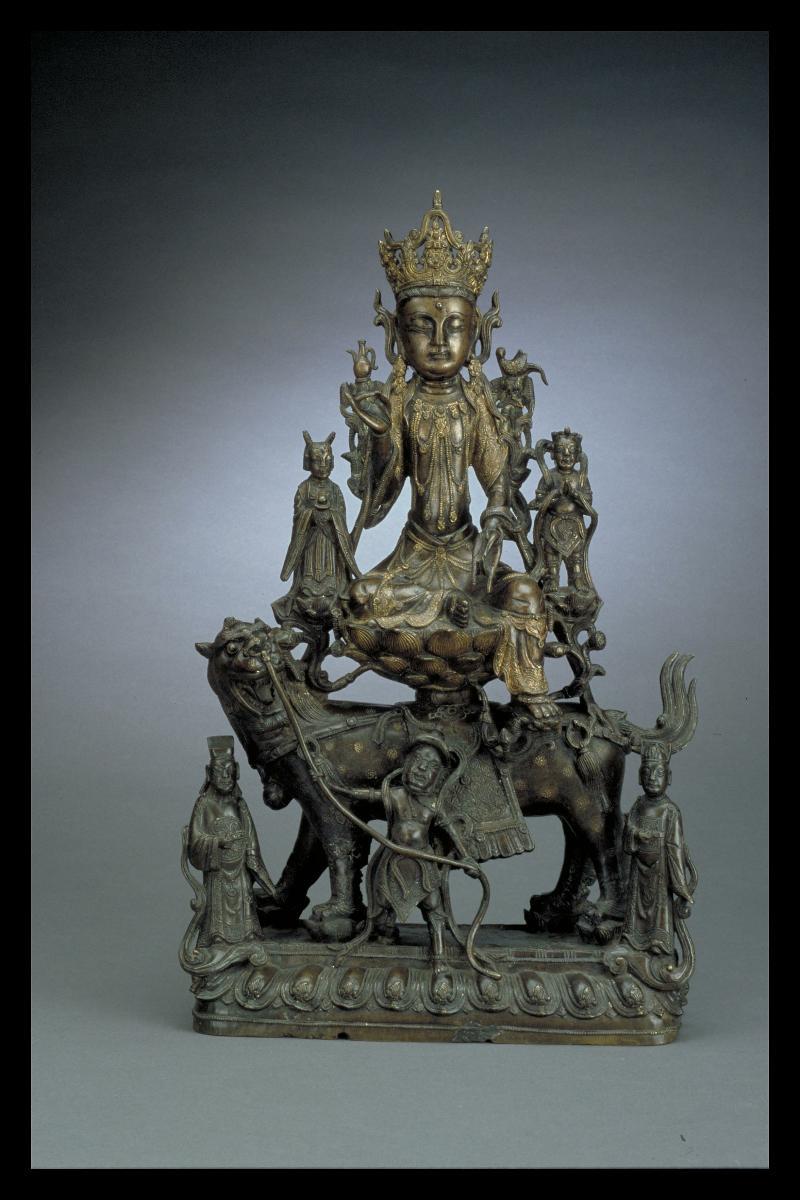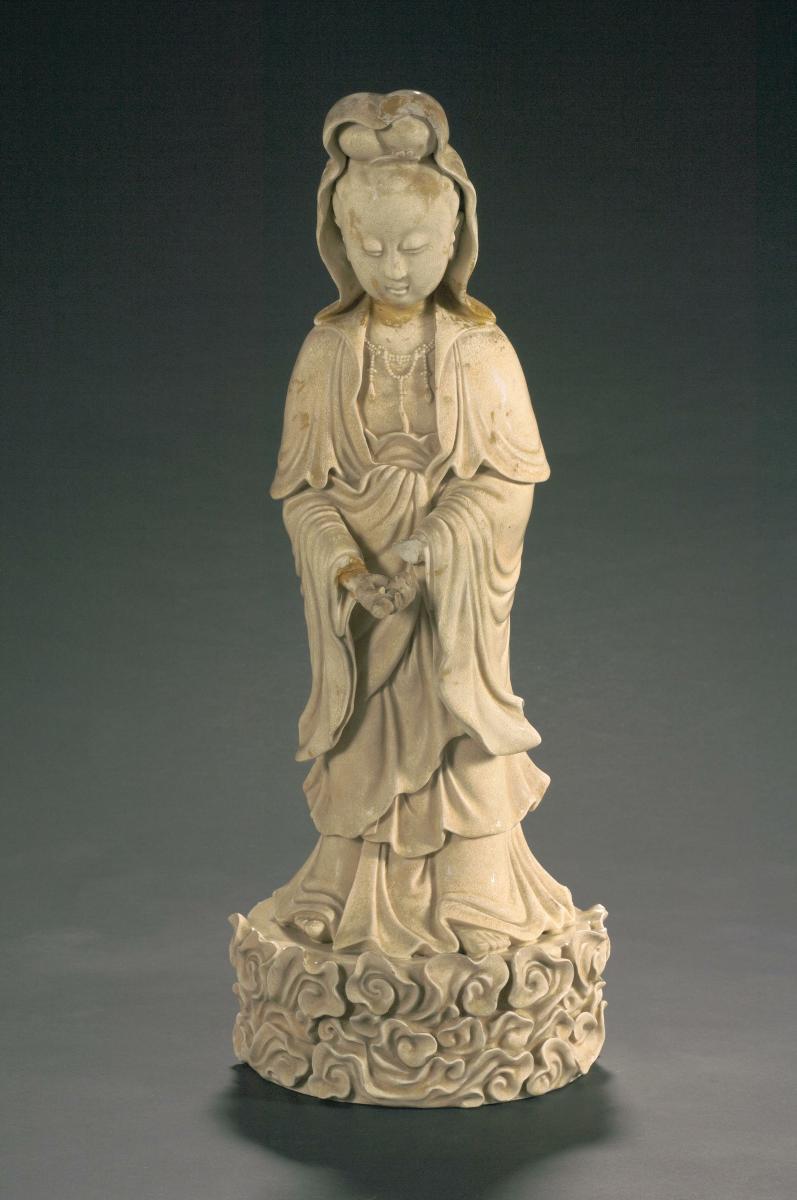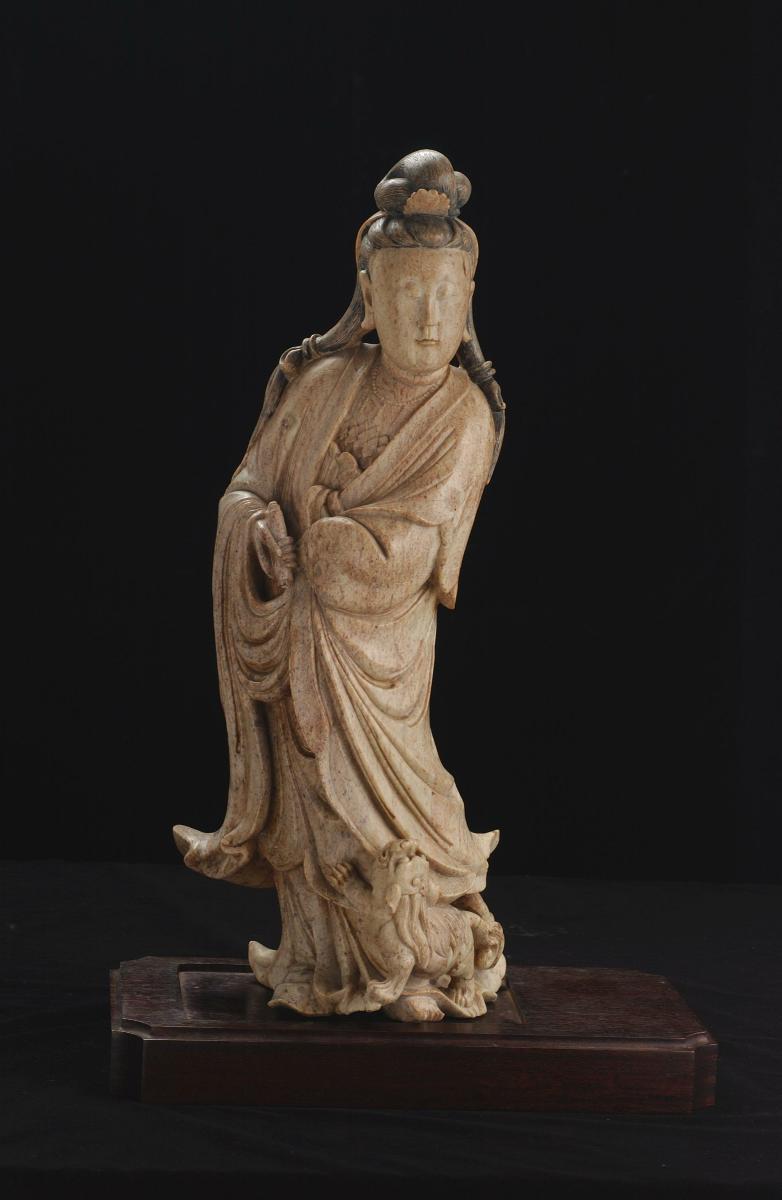This miniature sculpture of a bodhisattva is represented as a Tang dynasty (618– 906 CE) court lady in resplendent attire of high-waisted court dress and elaborate jewellery. She stands on a lotus plinth in tribhanga, (a graceful bending of waist in Hindu-Buddhist iconography). She holds in her hand a water vase, one of the many attributes of Guanyin. Guanyin, or Guanshiyin, is the Chinese name of the bodhisattva, Avalokiteshvara. Literally, it means the Observer of Sound—the sounds are the cries and plea for help from millions of beings. In China, the transformation from the male to female bodhisattva probably began during the Tang dynasty. Guanyin became a popular goddess, rather than a Buddhist saviour, after the 10th century as devotees began to venerate her together with local deities. A bodhisattva is a Sanskrit term referring to an enlightened being.















